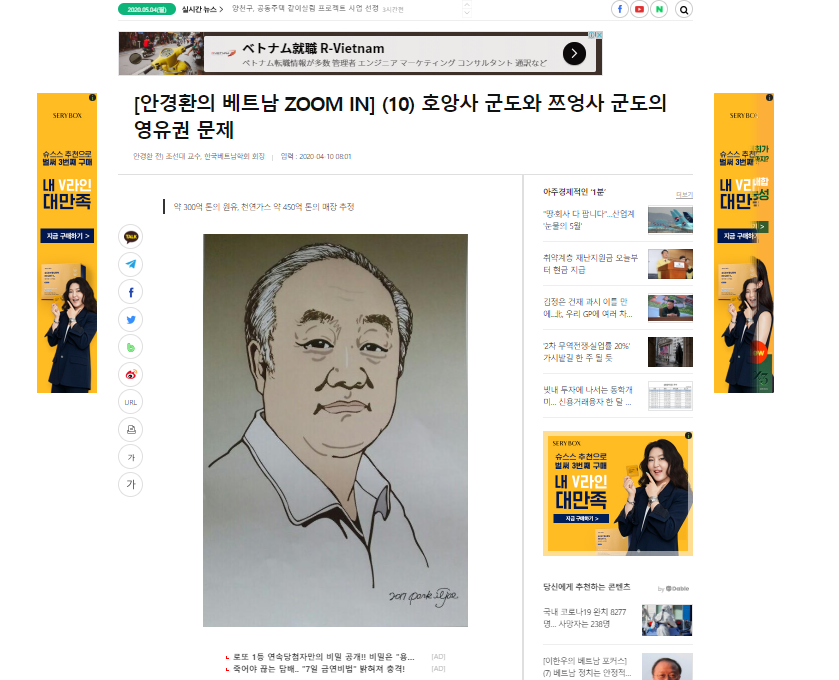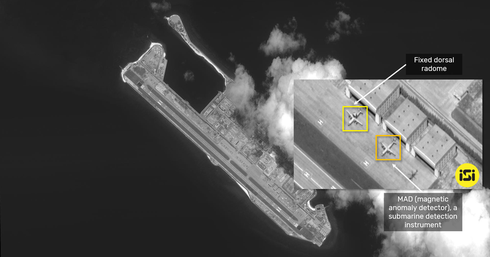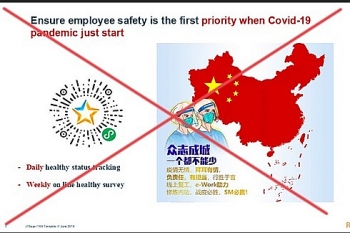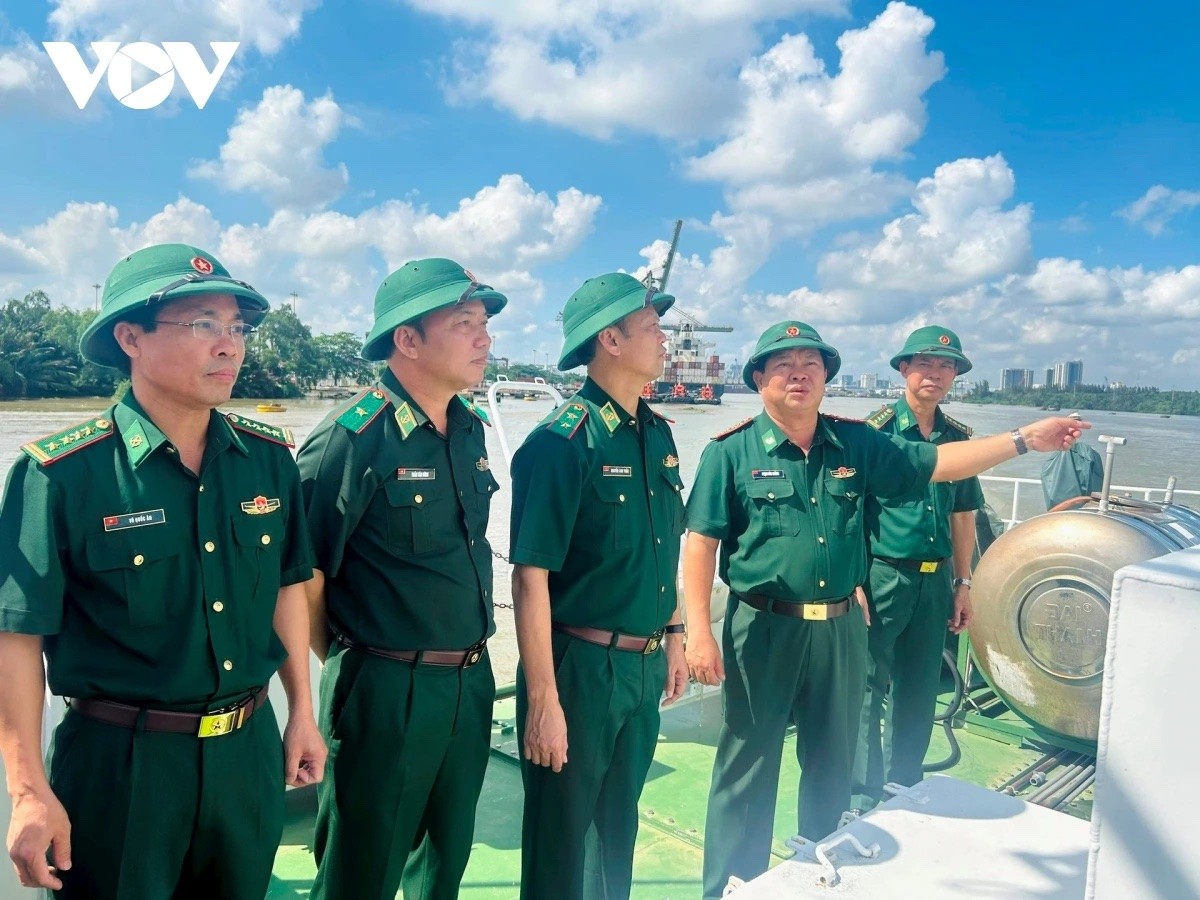China’s illegal activities in the Bien Dong Sea: How is it dangerous and should be vigilant?
Unjustifiable and Illegal
China appointed its fishing vessels and militia ships to encircle and threaten around Thi Tu Island in the Truong Sa Islands (Spratly Islands) of Vietnam currently occupied by the Philippines.
It also announced the operation of two scientific research stations on Subi and Chu Thap Reef (Fiery Cross Reef) in the Truong Sa Islands (Spratly Islands).
Conduct anti-submarine drills in the Bien Dong Sea (South China Sea).
Appointing large numbers of fishing vessels and coast guard vessels to make incursions to the north waters of Indonesia's Natuna Island.
Making a loud-voiced propaganda and slander that "Vietnamese fishing vessels intensified incursions in Chinese waters to conduct a "conflict in the Bien Dong Sea (South China Sea) again, Vietnam Coast Guard ship provoked Chinese destroyers"...
It is noteworthy that China recently announced its decision to establish district-level administrative units in the Hoang Sa (Paracel) Islands and Truong Sa (Spratly) Islands while moving the HD08 geological survey ship group to the south of the Bien Dong Sea (South China Sea), entering into Vietnam's exclusive economic zone (EEZ) and is currently prowling inside the EEZ of Malaysia, Brunei, and Indonesia…
Decisions made by China to set up administrative units for the Truong Sa Islands and Hoang Sa Islands of Vietnam showed its long-standing conspiracy promoted immediately after using its force to occupy the Hoang Sa Islands since 1974 and some islands of Truong Sa in 1988.
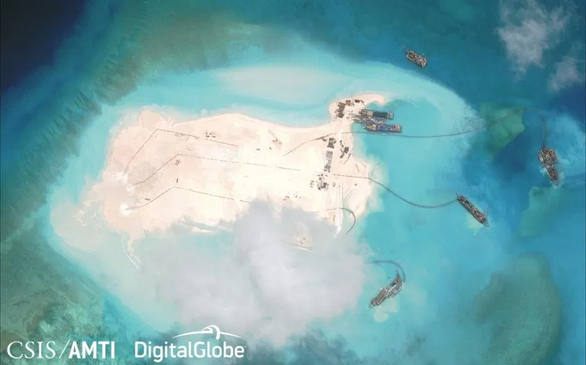 |
| The photo taken in 2014 showed Chinese dredges participating in illegal accretion of the Fiery Cross Reef in the Vietnam's Spratly Islands but illegally occupied by Beijing - Photo: CSIS / AMTI |
China seeks administrative, civil and legal tricks to legitimate its using–force actions. In fact, it established some administrative units there since 1990s last century, after its armed usurping of these two archipelagos. In 2012, China announced the establishment of the so-called "Sansha City" to "manage" the Nansha islands (Vietnam‘s Truong Sa Islands), Xisha islands (Vietnam‘s Hoang Sa Islands) and Zhongsha islands (Macclesfield Bank). In September 2017, it applied a new tactic called "Four Sha Claims", arrogating sovereignty over the 4 groups of islands including the above 3 groups and adding Dong Sa (Pratas Islands now managed by Taiwan) and rights of using EEZ around these 4 groups to itself.
Those milestones taken by China in its action steps once appearing got our strong protest. This time it continued its way to announce the approval of the establishment of a district-level administrative units, upgrading the administrative unit to act on behalf of the Chinese government to "manage" the Hoang Sa Islands (Paracel Islands) and Truong Sa Islands (Spratly Islands) of Vietnam. China is always arguing that it has "historical sovereignty" over these two archipelagos. It misinterprets all the historical records to say that the Chinese found out, discovered, managed “Tay Sa Islands” (Hoang Sa Islands) and “Nam Sa Islands” (Truong Sa Islands) right before BC. But in fact, it is impossible to provide any legal evidences related to the previous Chinese government establishing administrative units there.
All Chinese documents have shown that the China map only draws the country’s southernmost tip ending at the south of Hainan Island. China has no any ways to provide legal evidences, so it uses the way of spreading a smokescreen to fill its gap and black spots in the legal files, further creating its sovereignty claims. China’s announcement of the establishment for district-level unit to govern Hoang Sa and Truong Sa without its legal sovereignty over these archipelagos is stipulated unjustifiable and illegal internationally.
How is it dangerous?
China’s step-up activities on the Bien Dong Sea (South China Sea) during the Covid-19 pandemic mentioned above possibly show that China aims to pave the public opinion way for a preparation of deploying an invasion campaign to the Southern Bien Dong Sea (Southern South China Sea) in the post-Covid - 19 period according to the scenario planned previously by China as in following details:
Firstly: Making a diversion of creating and strengthening the legal basis to disguise and justify its intention in the actions to deploy the new offensive incursion campaign, either through "soft attacks", or by "hard strikes", depending on developments in the regional and international situation related to the strength and standpoint of the concerned nations.
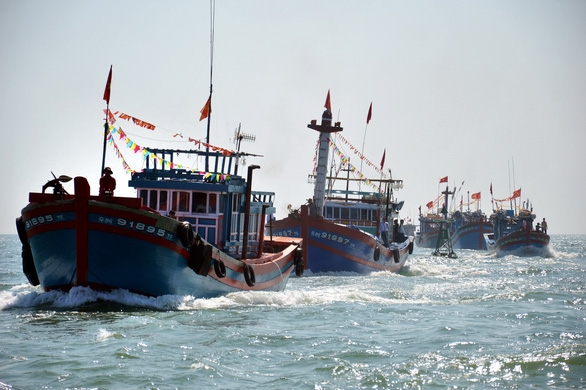 |
| Provinces and cities encourage fishermen to stick to normal production within Vietnam's territorial waters and guide to form organizations and groups to go to their production areas to support each other on the sea - Photo: TRAN MAI |
Secondly: Probing the regional and international community’s reactions, especially the powers such as USA, Russia, Western Europe, Japan, Australia, India ....
Thirdly: Creating and deploying a battle formation in order to carry out its traditional stratagems, for example, "disturb the water and catch the fish", seeking tricks to create conflicts, internal and in the regional and national community divisions, undermining the solidarity of opponents to reap benefits from confusion and win its game easily; or "make a sound in the east and strike in the west", making noises in the southern Bien Dong Sea, but possibly attacking the another...
Fourthly: Creating a “ fait-accompli” situation in the maritime areas, the continental shelf completely belongs to the sovereignty, sovereignty rights and jurisdiction of the countries along the Bien Dong Sea; even including some semi-submerged geographical structures in the Truong Sa (Spratly) archipelago area currently managed by Vietnam, the Philippines, Malaysia ... to bargain forcing countries to apply the policy of "setting aside disputes, jointly developing resources", in reality, it conspires to create disputes from nothing to make non-disputed areas into disputed areas.
Vigilance
Therefore, it is likely in the coming time, especially in the post-Covid 19 period, China will deploy:
One: Take its power advantages to invade more geographic entities, or create a “fait-accompli” situation in the Truong Sa (Spratly) archipelago, in the exclusive economic zone and on continental shelves of countries around the Bien Dong Sea (South China Sea) to legitimize the "cow's tongue" claim, forcing countries to accept their unjustifiable claims.
Two: Continue to invest in building military bases on the Hoang Sa and Truong Sa archipelagos, hiding under civilian forms such as lighthouses, marine economic science research stations ... both serving the purpose of defense security and fulfill its political, economic and legal goals ... such as:
- Confusing, deluding and deceiving public opinions, concealing its illegal activities; persuading its activities of being considered proper, rational, for humanitarian purposes, for community life ...;
- Continuing its fabrication to justify that the entities it occupied considered suitable for human life and having their own’s economic life, so it has a right to expand the range of "adjacent" and "related" seas to 200 nautical miles;
- Seeking to "snatch" the marine resources in the exclusive economic zone and continental shelf of countries around the Bien Dong Sea, according to the policy of "China's sovereignty, setting aside disputes and jointly developing resources" ...; discharge the partners supposed to be companies of countries cooperating with nations in the region ...;
- Making happen the “Disturb the water to catch the fish” situation causing an unstable business and production environment to weaken the economic activities of the countries in the region and enable it to easily manipulate and pull the strings those ..., force them to depend their economy, politics, security, and defense... on China.
| Vietnam has owned sufficient legal evidences to prove its sovereignty over Hoang Sa Islands and Truong Sa Islands. If it is supposed a territory belonging to a sovereign state, that state has the right to integrate, separate and organize administrative units suitably to its geography and population, within the scope of its jurisdiction. So is Vietnam, the Nguyen Lords established the “Hoang Sa unit” administered by the Nguyen Dynasty long time ago during the feudal period. During the French colonial period in Vietnam, the sovereignty in Truong Sa and Hoang Sa Islands were also carried out. King Bao Dai in 1938 made up his mind to separate Hoang Sa from Quang Ngai province to integrate it into Thua Thien province. When the country was reunified, the government of the Socialist Republic of Vietnam decided to establish its administrative units, especially in 1982 Vietnam established Hoang Sa and Truong Sa districts, now Hoang Sa district belongs to Da Nang City , Truong Sa district belongs to Khanh Hoa province , and then continue to set up their smaller units. |
*Vietnamese Version: Hành động phi pháp của Trung Quốc trên Biển Đông: Nguy hiểm thế nào và cảnh giác ra sao?
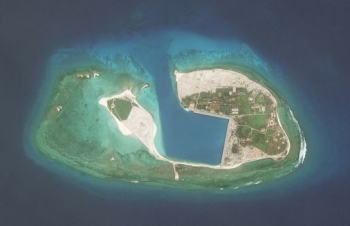 | Chinese aircraft landing at Fiery Cross Reef, Vietnam urges parties not to further complicate situation Given the current regional and international context, Vietnam urges parties not to take actions to further complicate the situation in the East Sea, stressed Foreign ... |
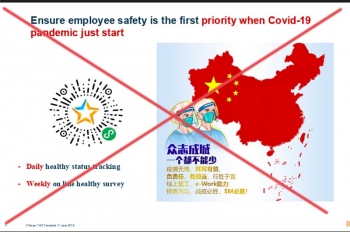 | Vietnam netizens fire up with Bayer’s documents containing China nine-dash line Vietnamese netizens call for the dismissal of Bayer Vietnam managing director and boycott of its products. |
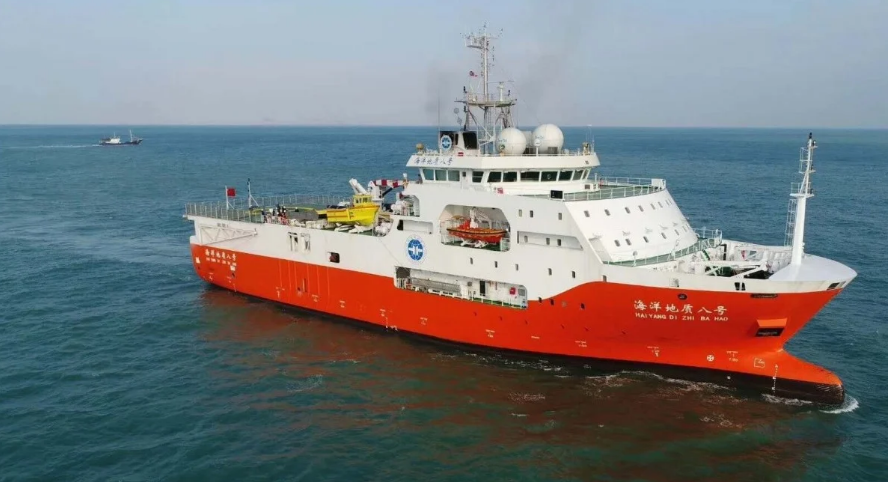 | Reuters: Chinese Haiyang Dizhi 8 survey vessel returns to Vietnam's EEZ The Chinese Haiyang Dizhi 8 survey vessel has returned to waters within Vietnam’s Exclusive Economic Zone (EEZ), Reuters cited ship tracking data on April 14. |
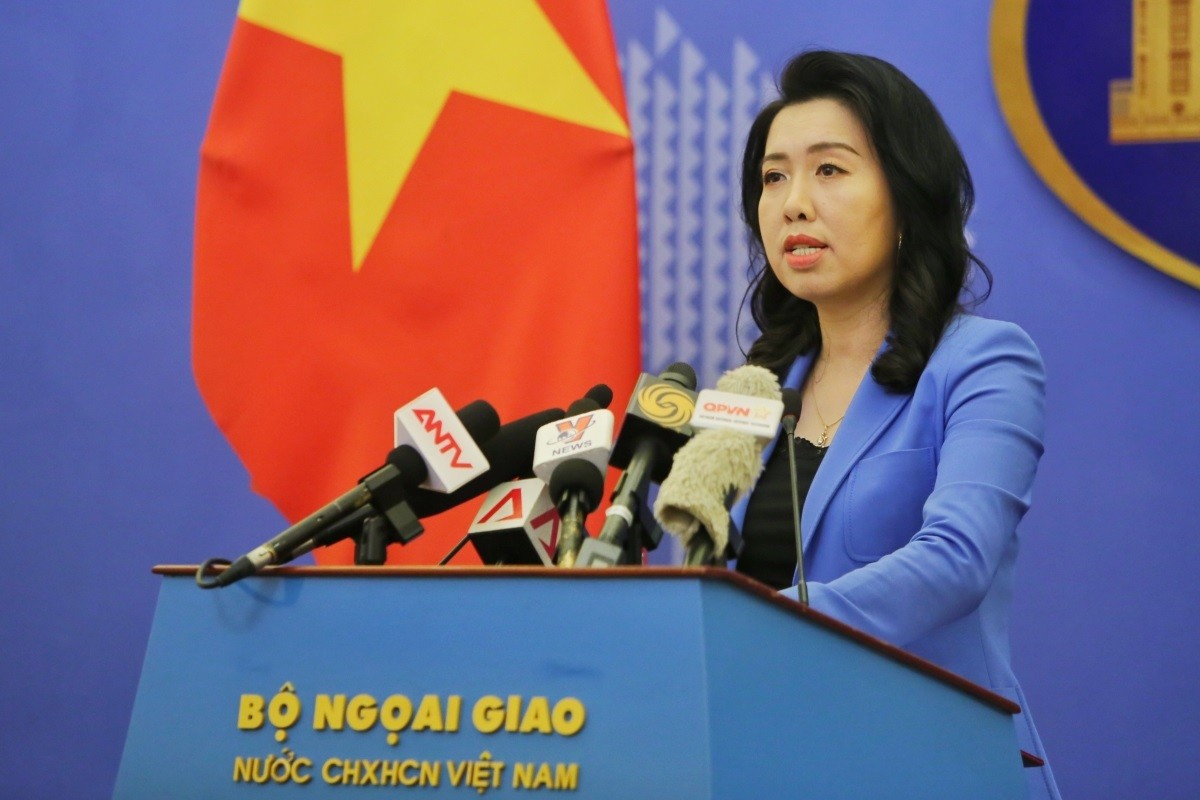 Seas and islands
Seas and islands
Vietnam Demands China Respect The Country's Sovereignty in East Sea
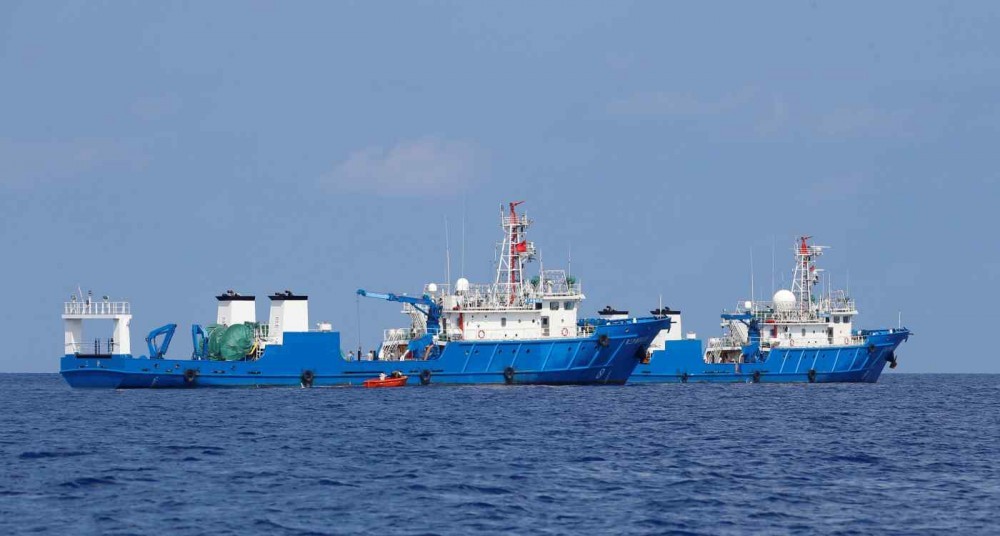 Focus
Focus
Promoting Substantive And Effective Code of Conduct in The South China Sea
Recommended
 Seas and islands
Seas and islands
Vietnam Endorses Common Voice on Ocean Jurisdiction
 Seas and islands
Seas and islands
Dialogue as Key to Settling Disputes and Advancing Law of the Sea
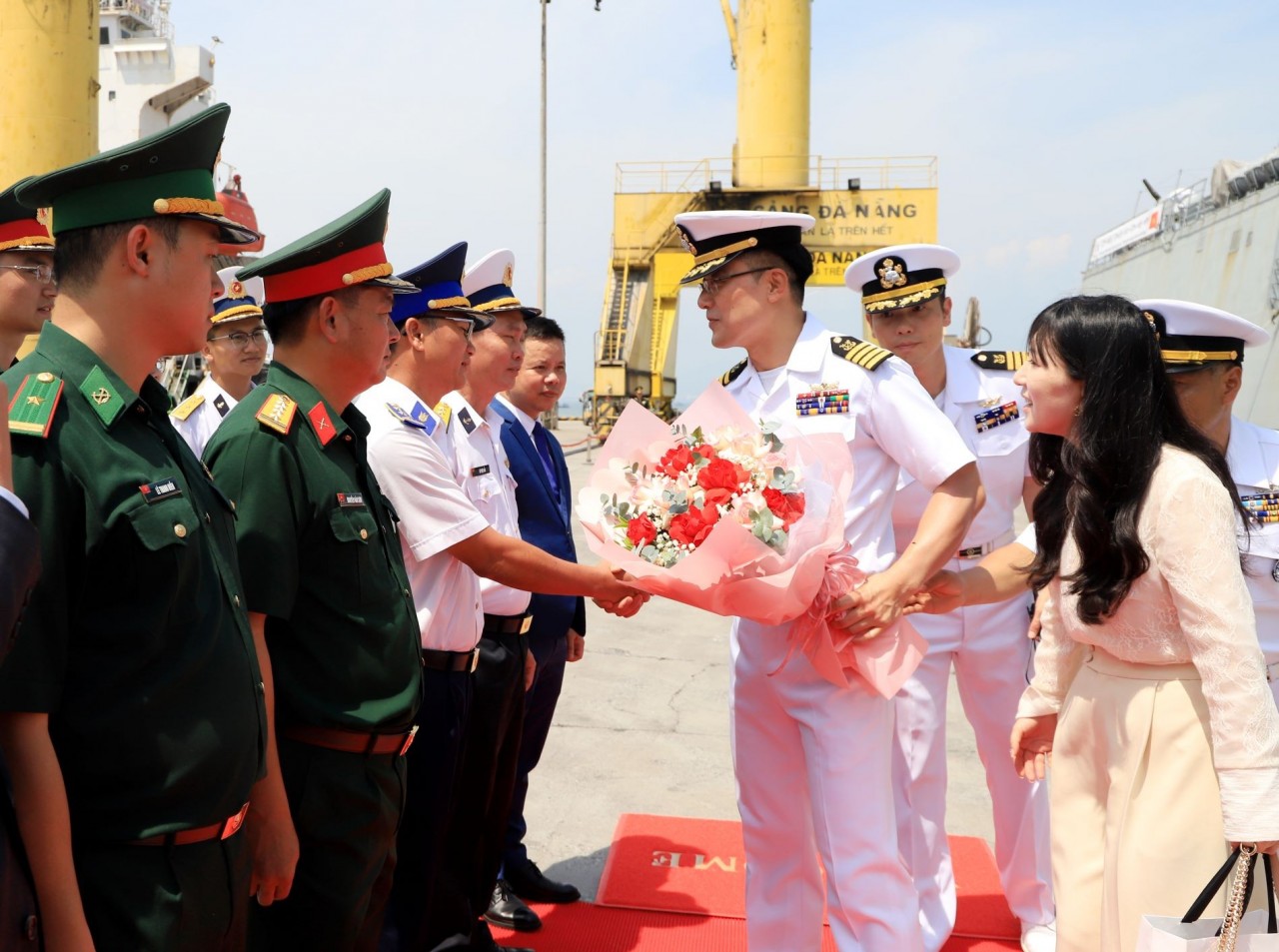 Seas and islands
Seas and islands
RoK Navy Ship Pays Friendly Visit to Da Nang City
 Seas and islands
Seas and islands
Naval Region 5 Promotes Reading Culture, Fosters Patriotism
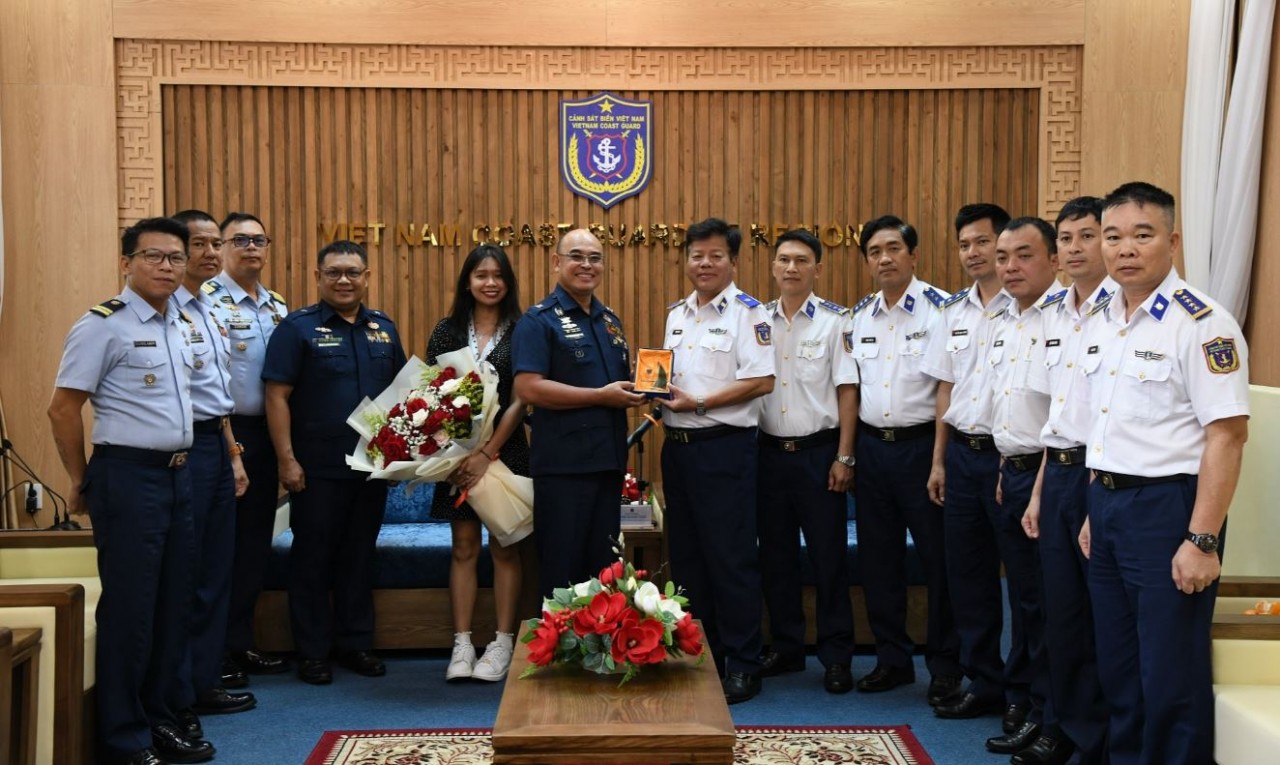 Seas and islands
Seas and islands
Coast Guard Region 2 Command Hosts Philippine Coast Counterpart
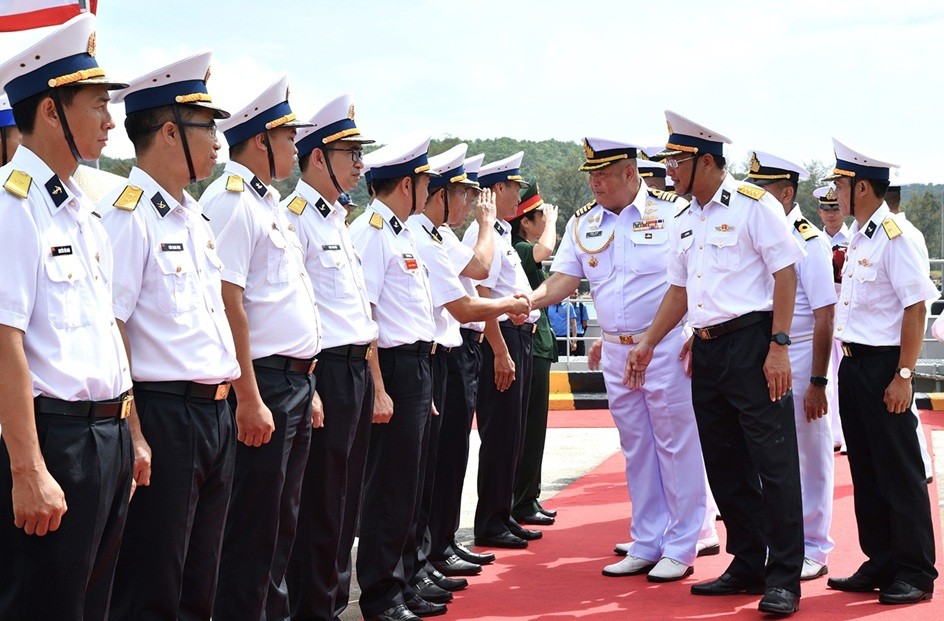 Seas and islands
Seas and islands
Vietnam - Thailand Navy: Coordination to Well Address Problems at Sea
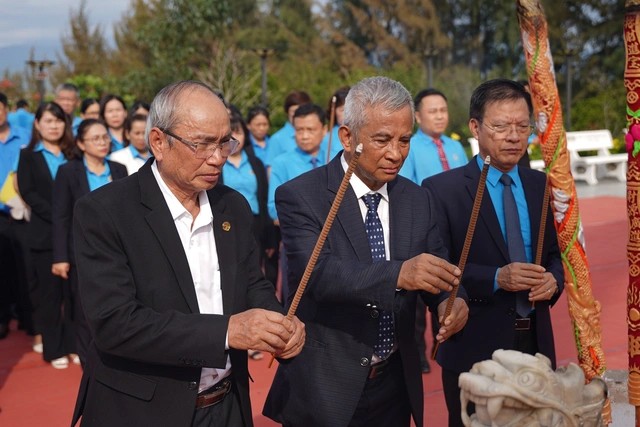 Seas and islands
Seas and islands
Honoring the Fallen: Incense Offering for the 37th Anniversary of Gac Ma
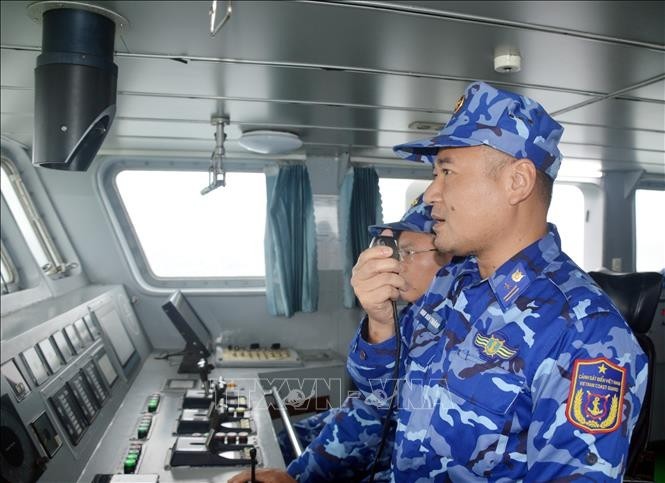 Seas and islands
Seas and islands

